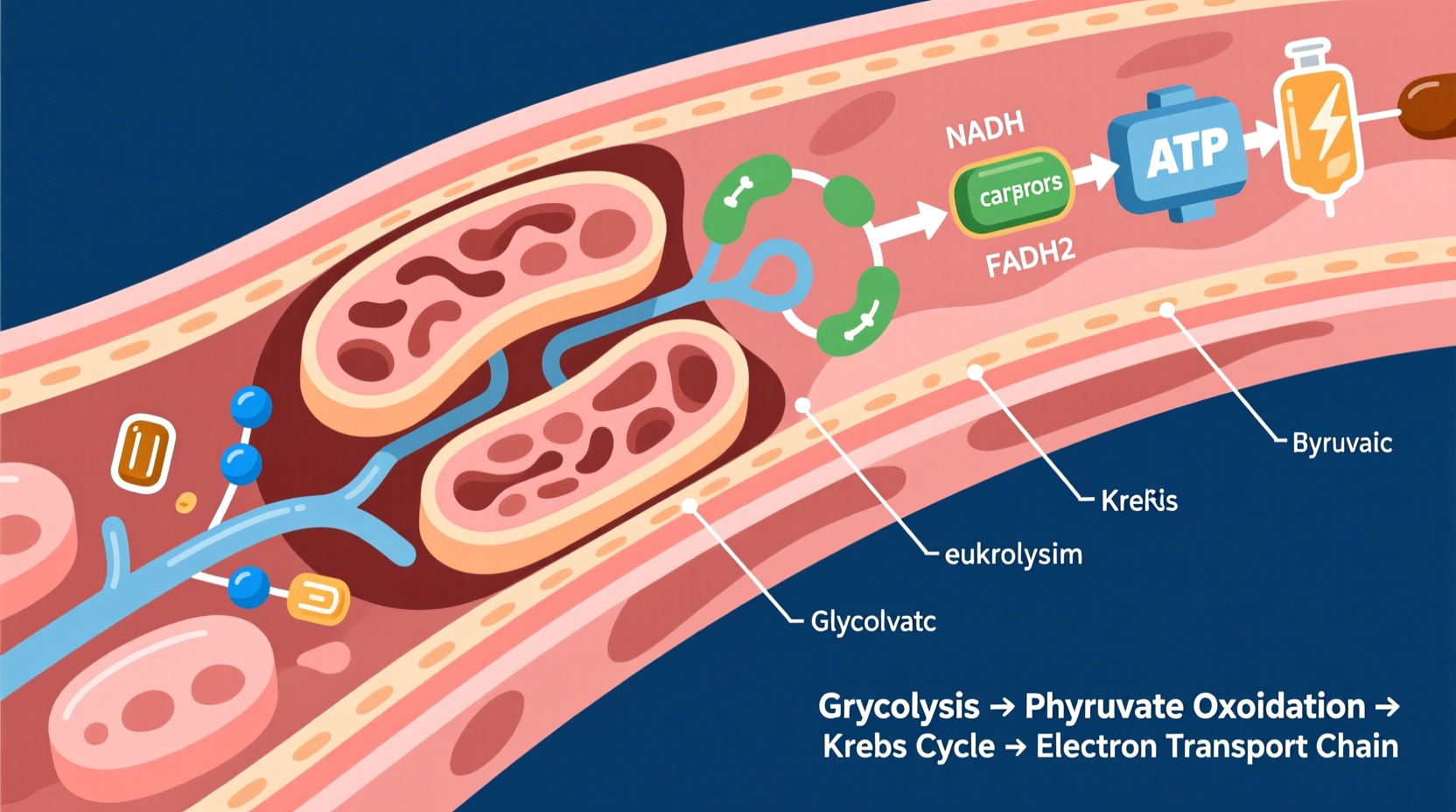Heterotrophs primarily use cellular respiration to break down food, converting organic molecules into usable energy through metabolic processes. This involves digestion to break down complex molecules followed by aerobic or anaerobic respiration to produce ATP, the energy currency of cells.
Understanding how organisms obtain energy is fundamental to biology. If you've ever wondered how animals, fungi, or bacteria extract energy from their food, you've come to the right place. This article explains the precise biological mechanisms heterotrophs use to break down food molecules and transform them into usable energy.
The Core Process: Cellular Respiration Explained
When you ask what process heterotrophs use to break down their food, the answer centers on cellular respiration. Unlike autotrophs that create their own food through photosynthesis, heterotrophs must consume organic matter and break it down through metabolic pathways.
Cellular respiration occurs in three main stages:
- Glycolysis - Occurs in the cytoplasm, breaking down glucose into pyruvate
- Krebs cycle (Citric Acid Cycle) - Takes place in mitochondria, further processing molecules
- Electron transport chain - Generates the majority of ATP through oxidative phosphorylation
These processes work together to convert the chemical energy stored in food molecules into ATP, which powers cellular activities. The overall chemical equation for aerobic respiration is:
C6H12O6 + 6O2 → 6CO2 + 6H2O + ATP (energy)
Digestion: The First Step in Food Breakdown
Before cellular respiration can occur, heterotrophs must first digest their food through enzymatic breakdown. This process varies by organism type:
- Animals use mechanical and chemical digestion in specialized organs
- Fungi secrete enzymes externally to break down material before absorption
- Bacteria employ various enzyme systems depending on their environment
Enzymes like amylase, protease, and lipase target specific macromolecules (carbohydrates, proteins, and fats), breaking them into smaller components that can enter cellular respiration pathways.
| Heterotroph Type | Digestive Method | Primary Energy Yield |
|---|---|---|
| Animals | Internal digestion with specialized organs | 36-38 ATP per glucose molecule (aerobic) |
| Fungi | External enzymatic digestion | 2 ATP per glucose molecule (anaerobic) |
| Bacteria | Variety of methods depending on species | 2-38 ATP depending on process |
Aerobic vs. Anaerobic Processes: When Oxygen Matters
The specific process heterotrophs use to break down their food depends significantly on oxygen availability:
Aerobic Respiration (With Oxygen)
This is the most efficient process, yielding up to 38 ATP molecules per glucose molecule. It's used by most animals, many bacteria, and fungi when oxygen is available. The complete breakdown includes:
- Glycolysis (2 ATP net gain)
- Pyruvate oxidation
- Krebs cycle (2 ATP)
- Electron transport chain (34 ATP)
Anaerobic Respiration (Without Oxygen)
When oxygen is scarce, heterotrophs switch to less efficient processes:
- Lactic acid fermentation - Used by muscle cells and some bacteria, yielding 2 ATP per glucose
- Alcoholic fermentation - Used by yeast and some bacteria, yielding 2 ATP per glucose
According to research from the National Center for Biotechnology Information, "While aerobic respiration is significantly more efficient in ATP production, many heterotrophic organisms have evolved to utilize anaerobic pathways when necessary, demonstrating remarkable metabolic flexibility." (NCBI Biochemistry)

Metabolic Flexibility Across Different Heterotrophs
Not all heterotrophs break down food in identical ways. The specific process depends on the organism's evolutionary adaptations:
Facultative Anaerobes
Organisms like yeast and some bacteria can switch between aerobic and anaerobic processes depending on environmental conditions. This metabolic flexibility provides survival advantages in changing environments.
Obligate Anaerobes
Some bacteria, like Clostridium species, cannot tolerate oxygen and exclusively use anaerobic processes. These organisms often inhabit environments like deep soil layers or the human gut.
Specialized Digestive Systems
Complex animals have evolved specialized digestive systems that optimize food breakdown. For example, ruminants like cows have multi-chambered stomachs that host symbiotic bacteria to break down cellulose through fermentation.
Practical Implications of Understanding Heterotrophic Processes
Knowledge of how heterotrophs break down food has numerous real-world applications:
- Medical research - Understanding bacterial metabolism helps develop antibiotics
- Agriculture - Optimizing livestock digestion improves food production efficiency
- Biotechnology - Yeast fermentation processes are crucial for food production and biofuels
- Environmental science - Understanding decomposition processes helps manage ecosystems
For students studying biology, recognizing that heterotrophs use cellular respiration to break down food provides foundational knowledge for understanding ecosystems, energy flow, and metabolic disorders.
Common Misconceptions About Heterotrophic Food Breakdown
Several misconceptions exist about how heterotrophs process food:
- Misconception: All heterotrophs require oxygen to break down food
Reality: Many heterotrophs thrive in anaerobic conditions using fermentation or anaerobic respiration
- Misconception: Digestion and cellular respiration are the same process
Reality: Digestion breaks food into absorbable components; cellular respiration converts those components into ATP
- Misconception: All heterotrophs produce the same amount of energy from food
Reality: Energy yield varies dramatically based on the organism and available oxygen
According to educational resources from Khan Academy, "The efficiency of food breakdown in heterotrophs ranges from just 2 ATP per glucose molecule in fermentation to 36-38 ATP in aerobic respiration, demonstrating why oxygen availability is so critical for energy-intensive organisms." (Khan Academy Cellular Respiration)











 浙公网安备
33010002000092号
浙公网安备
33010002000092号 浙B2-20120091-4
浙B2-20120091-4